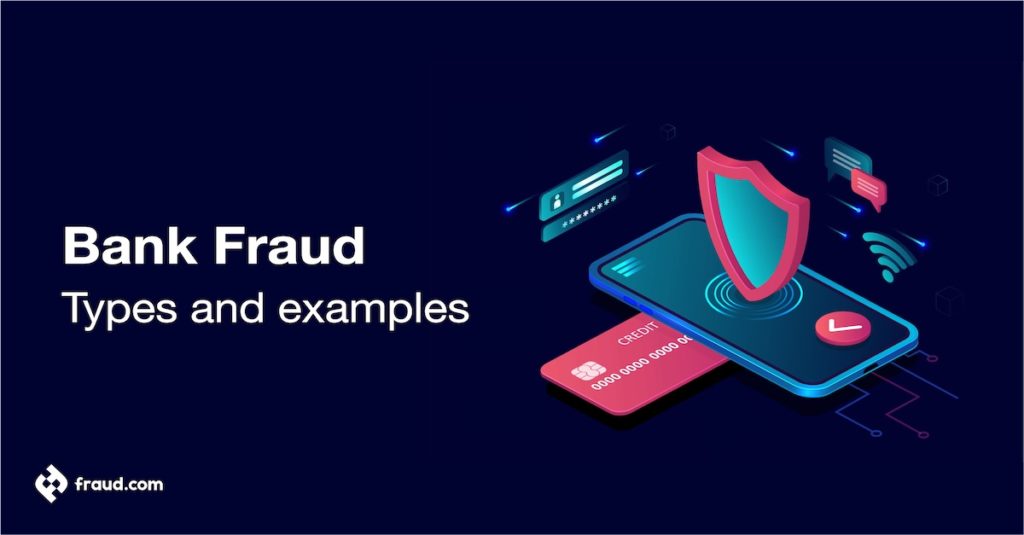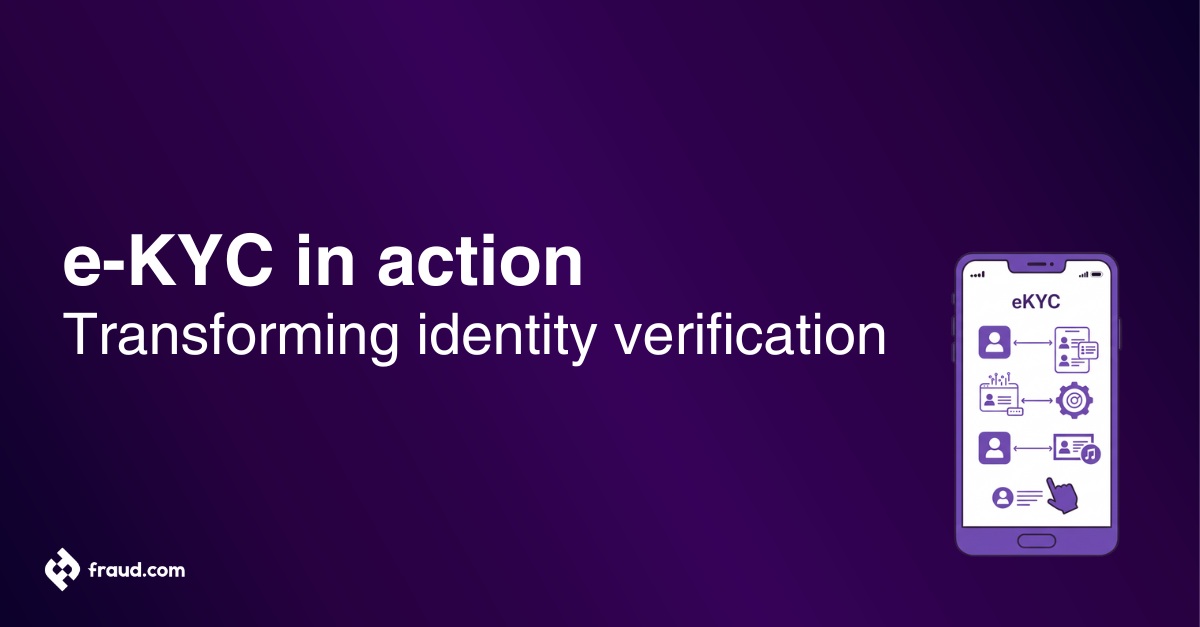Bank fraud is a major issue that can cause serious financial losses for individuals, businesses, and financial institutions. It is a serious crime that can occur in many different forms, ranging from simple check fraud to complex schemes such as identity theft and money laundering. Some of the most common types of bank fraud include counterfeiting, check fraud, identity theft, loan scams, credit card fraud and phishing.
Examples of these frauds can range from small-scale operations to large, multi-million-dollar operations. It is crucial for individuals and businesses to know the different types of bank fraud and to be aware of the various examples of fraud that could occur.
Understanding the types of bank fraud and the examples of each is the first step towards protecting yourself from becoming a victim. In this article, we will discuss the various types of bank fraud, their examples, and how to protect yourself from being a victim of bank fraud.
Table of Contents
ToggleWhat Is Bank Fraud?
Bank fraud is a form of financial crime which involves the misuse of a financial institution or its services for personal gain or to commit other criminal activities. It can involve a variety of techniques, such as creating false accounts, using false identities, or manipulating account records. It can also involve using stolen credit cards, ATM cards, or other forms of unauthorised access to a financial institution’s funds. Bank fraud is a serious crime and can result in serious penalties, including fines, imprisonment, and even the loss of business licenses.
Bank fraud is a major problem for financial institutions and can have a serious impact on their customers. It can lead to the loss of customer funds or the exposure of confidential information. Financial institutions must take steps to protect themselves against bank fraud by implementing security measures such as strong encryption, identity verification with two-factor authentication (2FA), fraud detection and prevention procedures and anti-fraud monitoring systems.
Banks must take steps to protect themselves from this type of fraud by implementing effective internal controls and monitoring systems. It is also important for customers to be aware of the potential risks associated with financial fraud and to take steps to protect their financial information. Have a look at the current banking fraud trends to stay ahead of the fraudsters.
Purpose of fraudsters for committing bank fraud
Fraudsters have several different motives for committing bank fraud. In some cases, fraudsters are simply looking to make a quick buck by taking advantage of someone else’s misfortune. In other cases, the motivation is more sinister, with fraudsters attempting to manipulate the financial system to their advantage.
In cases where a fraudster has access to a bank account, they may use it to transfer money to their accounts or to pay for goods and services that they have not purchased. This type of fraud can be difficult to detect, as the fraudster is often clever enough to use multiple accounts to make the transfer. Another tactic used by fraudsters is to make false claims on a bank loan. This may involve providing false information on their credit history or making false claims about their income.
Fraudsters may also use their access to a bank account to commit identity theft. This involves using someone else’s personal information to make fraudulent purchases or open new accounts in their name. This type of fraud is particularly damaging, as it can leave victims open to further financial exploitation. Leading to other types of fraud, such as various account takeover scenarios.
Bank fraud is a serious crime and those who commit it should be held accountable. It is important to remain vigilant and ensure that your financial information is secure. It is also important to report any suspicious activity to the authorities as soon as possible. By taking these steps, you can help protect yourself from becoming a victim of bank fraud.
Types of Bank Fraud
Bank fraud is a serious crime that can cost banks and customers significant amounts of money. It can come in many forms, from small-scale scams to large-scale operations that involve millions of dollars. The most common types of bank fraud include the following:
Accounting fraud
Accounting fraud is when a financial institution misrepresents its financial position by either omitting important information or deliberately misrepresenting it. This type of fraud can involve manipulating the financial statements of a bank to make it appear more profitable than it is. It can also involve the misappropriation of funds from a bank’s accounts.
Bill discounting fraud
Bill discounting fraud occurs when a bank accepts bills that are not backed by adequate collateral. This type of fraud can lead to losses for the bank if the person or entity that issued the bill does not pay it back. It can also involve the sale of a bill at a discount, which can result in the bank losing money.
Cheque kiting
Cheque kiting is a form of fraud which involves taking advantage of the time gap between the writing and clearing of a cheque. A criminal will write a cheque for an amount of money that they know is not in the account, then deposit it into another account. Once the cheque has been accepted, the criminal will withdraw the funds from the other account before the original cheque bounces due to a lack of funds. This is a form of fraud which involves the use of forged or fraudulent documents.
Forged or fraudulent documents
Forged or fraudulent documents are documents which have been created, altered, or tampered with to deceive or defraud someone. For example, a criminal might use a forged or fraudulent document to open a bank account in someone else’s name and deposit a cheque they know will not clear. This is a form of cheque kiting which is illegal and can lead to criminal charges.
Forgery and altered cheques
Forgery and altered cheques, as well as fraudulent loan applications, are two very serious offences. Making minor changes to a document or cheque to defraud someone is illegal and punishable by law.
Altered cheques are commonly used in fraud, as they are easy to alter and difficult to detect. For instance, a person can add or delete numbers, change the name of the recipient, or even change the date and amount. Altered cheques can be used to obtain money or goods that the perpetrator is not entitled to, and can also be used to commit identity theft.
Fraudulent loan applications
Fraudulent loan applications are another form of fraud. This type of crime involves submitting false or incomplete information on a loan application to obtain a loan that the perpetrator is not qualified for. It can also involve creating fake documents or providing false information about income, assets, or other financial information.
Empty ATM envelope deposits
Empty ATM envelope deposits have become an interesting area of concern when it comes to fraud. It is a process wherein criminals deposit empty ATM envelopes into ATMs to create fake deposits to launder money. This is done by taking advantage of the fact that many banks do not take the time to verify the contents of an ATM deposit, and thus they can be used to hide illegal activities.
Identity theft or impersonation
Identity theft or impersonation is a serious crime and a growing problem in today’s world. It involves someone stealing another person’s personal information such as their name, address, bank account number, Social Security Number (USA) or National Insurance Number (UK), driver’s license number, or credit card information and using it to commit fraud or other crimes.
Identity theft or impersonation can occur in several ways. One way is for someone to gain access to a person’s personal information by hacking into their computer or stealing their wallet. Another way is for someone to use the stolen information to open new accounts or to make purchases in the victim’s name.
Money laundering
Money laundering is a process of concealing the sources of illegally obtained money, involving the transfer of funds from one financial institution to another, or the use of false identities to hide the origin of the money. Money launderers may also attempt to disguise the movement of funds by using shell companies, overseas bank accounts, or anonymous online wallets.
This type of fraud is often perpetrated by organised crime groups or individuals who have access to someone else’s card information. Money laundering can lead to loss of funds, as well as increased scrutiny from law enforcement and financial regulators.
Payment card fraud
Payment card fraud is the illegal use of debit or credit cards. Making it a global problem that affects people who use credit and debit cards. It occurs when someone steals a cardholder’s information and uses it to make unauthorised purchases.
Payment card fraud can be perpetrated in a variety of ways, from stealing physical cards to hacking into online accounts. Regardless of how it is done, the result is the same – financial loss for the cardholder.
Phishing or Internet fraud
Phishing or Internet fraud is a type of fraud that involves the use of deceptive techniques, such as sending emails, texts, or pop-up messages, to obtain sensitive personal or financial information from unsuspecting victims. The goal of phishing is typically to steal money or data or to access private accounts, such as bank accounts.
Criminals use fake websites, emails, or text messages to deceive victims into providing personal information, such as credit card numbers, bank account numbers, and passwords. The criminals then use this information to steal money from the victims’ accounts or to commit other types of fraud.
Prime bank fraud
Prime bank fraud is a type of fraudulent investment scheme, in which perpetrators create fictitious “prime banks” to lure investors into investing in non-existent financial instruments or products. The perpetrators may also use false documents such as fake bank statements, forged signature cards, false financial records, fraudulent statements, false testimonials and other fabricated documents to convince investors that their money is being invested in a legitimate venture. The fraudsters promise high returns in a short time.
Rogue traders
Rogue traders are individuals or entities that engage in securities fraud and other illegal activities to make a profit. They often use deceptive tactics to manipulate the market and take advantage of unsuspecting investors. Rogue traders can also be brokers or investment advisers who provide false information to their clients to generate commissions or fees.
Stolen cheque
Stolen cheque fraud is a type of financial fraud in which a person illegally obtains and uses a cheque belonging to someone else. The fraudster then attempts to cash the cheque or deposit it into their account. Common methods of committing this type of fraud include stealing cheques from mailboxes, stealing chequebooks from homes, and taking advantage of the elderly.
Wire transfer fraud
Wire transfer fraud is a type of fraud involving the transfer of money through wire transfer services. It generally involves a thief or fraudster using stolen personal information to gain unauthorised access to a bank account and initiate a wire transfer of funds from that account to another account, usually owned by the thief or an accomplice.
Other types of bank fraud
Other types of bank fraud include the following:
- Credit card fraud
- Check Kiting
- Account Takeover
- Counterfeiting
What is fraud in banking?
Fraud in banking is a type of financial crime that involves the use of deceptive or illegal practices to gain an unfair or unlawful financial advantage. It can occur in many ways and can involve any type of banking activity, including deposits, withdrawals, transfers, loan applications and investments. Banking fraud can be committed both by individuals and organisations, and it can range from small-scale schemes to large-scale operations.
One of the most common types of banking fraud is identity theft and another form of banking fraud is phishing. Organisations can also commit banking fraud. For example, they might use false information to apply for loans or credit cards, or they might use forged documents to obtain funds from banks. This type of fraud is often difficult to detect and can cause significant losses to the financial institution.
To protect themselves from banking fraud, individuals and organisations must be aware of the risks and take steps to reduce their vulnerability. For example, they should use strong passwords, be cautious when responding to emails or text messages, and check their bank accounts regularly for suspicious activity. They should also be aware of the signs of banking fraud, such as unusual withdrawals or transfers. Banking fraud is a serious crime, and it is important to stay alert and take steps to protect yourself.
Who is responsible for Bank Fraud?
Banking fraud is a serious offence and a major concern for both, banks and customers. It is a crime that causes financial losses to banks, customers and other stakeholders. The responsibility for banking fraud lies with both the bank and the customer. Banks are responsible for ensuring the security of customers’ financial data and accounts.
They should have strong security systems and protocols in place to protect customers’ accounts from fraud and theft. Banks should also ensure that their staff is adequately trained in detecting and preventing banking fraud.
On the other hand, customers have a responsibility to protect their accounts from fraud. They should ensure that their passwords are secure and not easily guessed. Customers should also be alerted of any suspicious activity in their accounts and should immediately report it to the bank. Additionally, customers should avoid using unsecured Wi-Fi networks to access their banking accounts and should be familiar with banking frauds and scams.
Both customers and banks have a responsibility to protect themselves from banking fraud. By taking the necessary precautions and staying vigilant, both customers and banks can reduce the likelihood of fraud.
How to detect Bank Fraud?
Detecting banking fraud is an important step in protecting your finances. It is important to be vigilant and aware of the signs of fraud. The first step in detecting banking fraud is to closely monitor your bank statements and credit reports. Look for any suspicious activity, such as unexplained withdrawals or purchases.
Additionally, you should pay attention to emails and texts that appear to be from your bank. These messages may be part of a phishing scam. You should also be wary of any calls or emails asking you to provide personal information or credit card details.
Another way to detect banking fraud is to set up transaction alerts. These alerts will notify you whenever a transaction is made with your account. This way, you can quickly detect any suspicious activity and take the appropriate measures. Additionally, you should check your account regularly to ensure that all transactions are accurate and legitimate.
Finally, it is important to use strong passwords and keep them secure. This will help protect your accounts from being hacked. It is also important to change your passwords regularly and to use two-factor authentication whenever possible. By taking these steps, you can help to ensure that your finances are safe from banking fraud.
For banks, the following list outlines some procedures that can help them detect bank fraud:
- Analysing customer behaviour and transaction patterns
- Monitoring account activity and suspicious transactions
- Utilising biometric authentication
- Implementing automated fraud detection systems
- Cross-checking data with partner companies
- Implementing fraud monitoring systems for irregular patterns in transactions
- Analysing customer profiles for inconsistencies
- Using Machine Learning and AI-driven fraud detection systems
- Requiring additional authentication for suspicious transactions
- Using data mining to uncover fraudulent activity
- Verifying customer identity and data
- Complying with all KYC and AML regulations
- Establishing strong authentication and verification processes
- Using biometrics, such as fingerprint and facial recognition
How to avoid Bank Fraud?
Banking fraud is a serious issue that can have lasting financial and emotional impacts on its victims. Fortunately, there are steps you can take to protect yourself and prevent bank fraud.
First, review your bank statements and account activity regularly. This will allow you to catch any suspicious or unauthorised transactions quickly and alert your bank of any suspicious activity. Additionally, it’s important to create strong passwords for your online banking and other financial accounts. The passwords should not be easily guessed and should be changed regularly to further protect your accounts.
It’s also important to be aware of your surroundings when banking in person or using an ATM. If you notice any suspicious activity or individuals, leave the area immediately and alert the bank or police. Other measures to prevent banking fraud include not responding to emails or phone calls requesting personal information, and only purchasing from reputable online stores.
Finally, if you do become a victim of fraud, contact your bank immediately. They may be able to reverse the fraudulent transaction and limit any losses. By taking the steps outlined above, you can help protect yourself from banking fraud.
Our Banking Fraud Solution – aiReflex
Banking fraud is an unfortunate reality that can have major implications for individuals and businesses. To help avoid falling victim to banking fraud, it is important to understand the various types of fraud and to take proactive steps to protect yourself. aiReflex offers a comprehensive solution that helps you detect, monitor and prevent banking fraud. aiReflex uses Artificial Intelligence (AI) to analyse data and detect irregularities, giving you an early warning of suspicious activity.
We understand the importance of having a safe and secure banking system. In this digital age, banking fraud is becoming increasingly rampant, and it is essential that banks have the right tools to protect themselves.
aiReflex is a comprehensive and powerful solution that enables banks to detect and prevent fraud. Using advanced artificial intelligence (AI) technologies to analyse customer behaviour and detect suspicious activities. This allows banks to quickly identify and investigate cases of fraud before it’s too late. aiReflex also provides tools for banks to monitor customer accounts in real-time and detect any suspicious activities.
Furthermore, aiReflex helps banks to reduce the costs associated with the fraud. By leveraging the power of AI, aiReflex allows banks to automate the process of detecting and investigating fraud cases, thereby reducing the time and money spent on manual investigations. Additionally, aiReflex uses predictive analytics to anticipate and prevent fraud before it even happens. This helps to reduce losses due to fraud and keep customer funds safe.
Moreover, aiReflex is designed to be secure, compliant, and reliable. It is built with strong encryption and is compliant with all relevant regulations. Our solution is also designed to be highly scalable so that banks can easily scale up their fraud prevention capabilities as needed.
At fraud.com, we take our commitment to providing secure banking solutions seriously. Our banking fraud solution, aiReflex, is a comprehensive and powerful tool that is designed to detect and prevent fraud. We are confident that aiReflex will help banks to protect their customers’ funds and reduce fraud losses.









